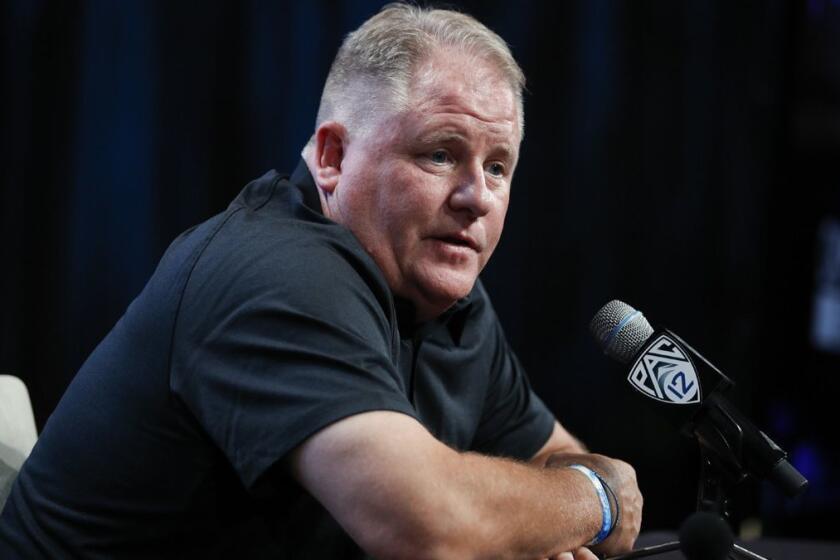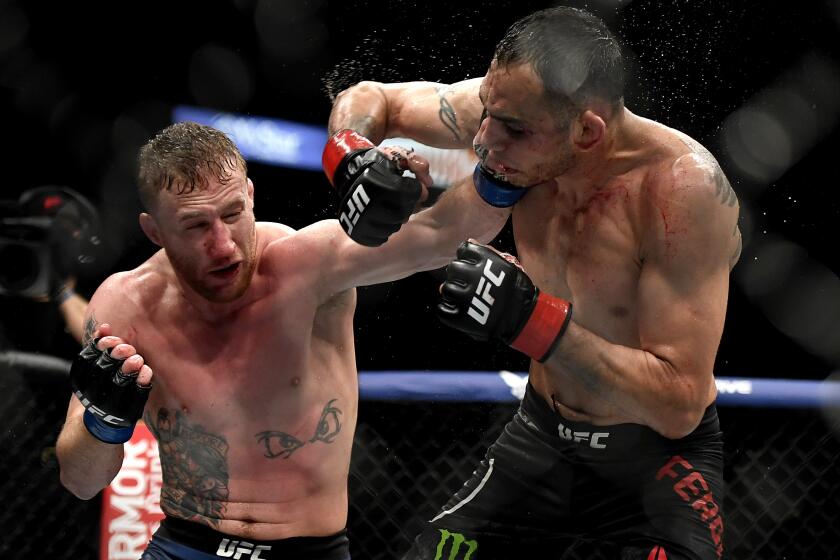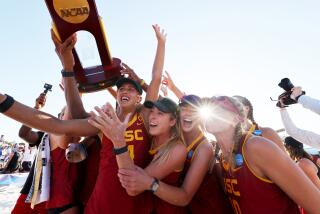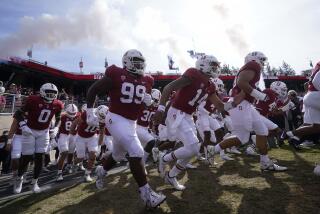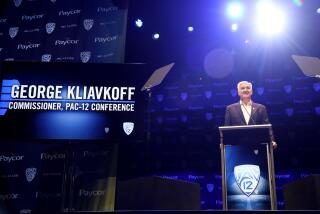‘We all need each other’: Inside college football’s plan to play on versus COVID-19
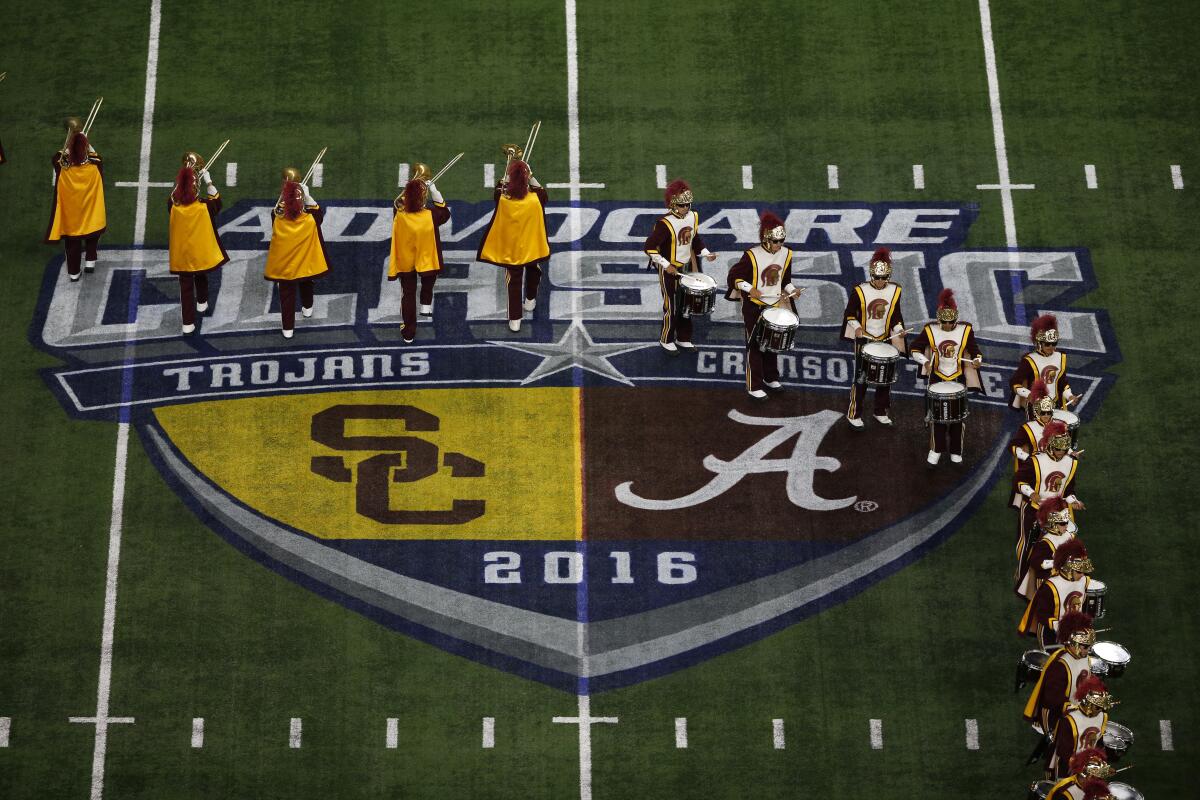
- Share via
One in a series of articles about the 2020 futures of major sports leagues.
Every morning, around 9:30 in Birmingham, Ala., Greg Sankey gathers the updated information from the Southeastern Conference’s research on a return to playing college football in the fall. He dials the number and drops into a teleconference with the other Power Five league commissioners.
Sankey’s notes often reflect a reality far removed from that of his colleagues, particularly the one who calls in from the Bay Area, jumping into his workday early and hoping to keep pace with peers who don’t encounter near as many roadblocks.
The call Wednesday must have been a doozy for Larry Scott, protector of Pac-12 interests. While 13 of 14 SEC presidents paved a path for Sankey, announcing their intention to bring students back to campus for the fall semester, Scott was busy reacting to another potential setback.
A day earlier, news broke that Los Angeles County, home to USC and UCLA, intended to extend its stay-at-home order by three months, which would push it into August.
If college football teams would need six weeks to prepare for a season that started Sept. 5, requiring players to be working out together by mid-to-late July, such a move could put the Trojans and Bruins behind schedule. This led to further speculation that USC would not be able to play Alabama in Arlington, Texas, in the season opener — and USC athletic director Mike Bohn immediately debunking that notion on Twitter.
The announcement Tuesday by the California State University system that it planned to operate virtually in the fall did not directly affect the Pac-12, but was an indication of political winds that sweep the opposite direction from what the SEC faces.
With the state-by-state response to the novel coronavirus dividing the country more by the day, the Power Five commissioners are attempting a seemingly ridiculous task: align the actions of the 130-team Football Bowl Subdivision, made up of schools from 42 states.
“There’s a lot of unique pressures, and there’s different cultures throughout the country, and different cultures result in different public policy sometimes, and different pressure on commissioners,” Scott said. “But we all need each other to play a full college football season.”
Despite the uncertainty that is sure to hover over higher education for many months — even in the South, presidents understand the virus’ behavior in the next six to eight weeks will ultimately decide their plans for the fall — the Power Five leagues are preparing for a full 12-week schedule that, as ever, leads into the College Football Playoff.
To pull it off, Scott said it’s key that the commissioners are “locked at the hip.”
But regionalism is at the heart of the settlement of all college football arguments. Would the SEC, the dominant force in the sport the last 15 years, and Big 12, which also has the overwhelming support of its presidents to bring students back, really wait around for their brethren in virus-ravaged parts of the country?
Coach Chip Kelly said he is planning as if UCLA will play football this season because no one has definitely said what will happen in light of the COVID-19 pandemic.
“We’re more connected now and certainly communicating more now than we have at any time,” Sankey said. “People have tried to parse statements about, well, this region is going to go this direction, that region will go another direction. In reality we’re going to keep learning. We have states opening that will provide information and context for decision-making. The strong desire and preference is that we can play as scheduled.
“What’s the inflection point for different decision-making? That’s not one I’m going to try to predict right now.”
“Power Five” took on a literal meaning in 2014 when the NCAA gave the SEC, Big Ten, Big 12, Pac-12 and Atlantic Coast Conference autonomy to make their own rules.
The FBS, college football’s top rung, is unique in that it is made up of NCAA member schools but its structure is governed by the conferences, which negotiate their own billion-dollar TV deals and make decisions about the championship format. There is no NCAA FBS champion.
The Power Five commissioners — Sankey, Scott, Bob Bowlsby (Big 12), Kevin Warren (Big Ten) and John Swofford (ACC) — and the presidents of their schools will be able to chart their own course in regard to football. Decisions on return to play for all other college sports will come from the NCAA.
This is an important distinction to make, especially when NCAA President Mark Emmert said last week, “College athletes are college students, and you can’t have college sports if you don’t have colleges open and having students on [campus]. You don’t ever want to put student-athletes at greater risk than the rest of the student body.”
Since most athletic departments depend on football revenue to keep their budgets afloat, Power Five commissioners can’t afford to view the circumstances of reopening that simply. To them, and to their vested parties, the answers lie not in black-and-white solutions but in figuring out how to move forward in the gray of a changing world in which the virus calls the shots and society is asked to adjust on the fly.
If the NBA resumes play, Adam Silver says it must stay on course even in the face of a positive COVID-19 test. Meanwhile, the UFC made that decision in real time.
“There was no undergraduate or graduate class when I was a student that said here’s how you deal with a long-term pandemic,” Sankey said. “So two months into it we continue to learn. We’re building the bridge as we cross the river, and we’re writing the instruction manual as we do so.”
::
The first thing to know about college football’s return is that without a major increase in testing capacity across the nation, it won’t be ruled safe to play a contact sport.
Programs will need enough access to diagnostic tests to regularly administer them to 100-plus players and staff members so they can quickly isolate those with positive tests.
“We have to make sure that it’s a surplus amount of testing capacity so that we’re not stressing the healthcare system of our communities for testing asymptomatic individuals [in the football program],” said Doug Aukerman, the chairman of the Pac-12’s medical advisory board and Oregon State’s senior associate athletic director for sports medicine.
“The other piece that is critical with testing is if you don’t have a really good and efficient contact tracing program then all the testing in the world isn’t going to be enough, if you can’t identify who those individuals have been in contact with and then be able to respond accordingly.”
The Pac-12’s medical advisory board — which has a peer group in the other Power Five leagues — meets multiple times a week and comprises athletic trainers, sports medicine doctors, epidemiologists and infections disease experts. Aukerman says he feels his board is close to having recommendations for a safe return to play but also knows that testing capacity is out of the schools’ control.

Can there be widespread point-of-care testing available by August, when teams would need to be practicing?
“I think there will be enough availability and enough bandwidth nationwide by the time we get to talking about having close contact sports,” Aukerman said.
Of course, before schools could take on properly testing players, they have to get them back on campus by mid-July without sounding public health alarms.
That shouldn’t be a problem for schools that plan to open for traditional classroom learning. Some universities will likely be offering a mix of online and in-person courses, which would allow those schools to show that football players aren’t being treated differently than regular students by returning.
After Cal State’s announcement about going virtual in the fall, it became clear there will be a third group of FBS schools that will have to work harder to convince critics that college football players aren’t receiving special treatment or being put at higher risk than the student body.
Fresno State, a Cal State school with a football team that plays in the FBS’ Mountain West Conference, provided a glimpse Tuesday of how presidents may attempt to navigate that scenario.
It responded to the Cal State announcement by tweeting, “Earlier today, @calstate provided guidance on what’s expected to be a largely virtual environment for this fall for all 23 campuses. We will not be closed in the fall as classes will still happen virtually and critical services such as the library, advising, etc. will be open.”
A university statement specifically mentioned that “schools and colleges are prioritizing in-person instruction for courses with academic outcomes that cannot be achieved virtually, such as performance, laboratory, and clinical experiences.”
If a small group of students attends class on campus, the argument could be made that college football players could assemble to work out and practice, too.
“We’re still planning on bringing all of our student-athletes back to campus,” said John David Wicker, the athletic director at San Diego State, which like Fresno State is in the Cal State system. “We feel like we can support them better, having them here.”
In the coming weeks, expect varied interpretations of what “open” means for a campus. Read between the lines, and a trend should begin to form.
From Sankey: “I’ve been clear on a consistent basis that a first step in this process of returning college sports is the return of operations to our campus. Those operations contemplate repopulating our offices, but also understand that it may look different than it did last fall, that it may be an updated approach.”
Sankey makes no mention of in-person learning. He points out that the NCAA has already allowed athletes to take exclusively online classes. It’s what Louisiana State quarterback Joe Burrow did last season on the way to the Heisman Trophy.
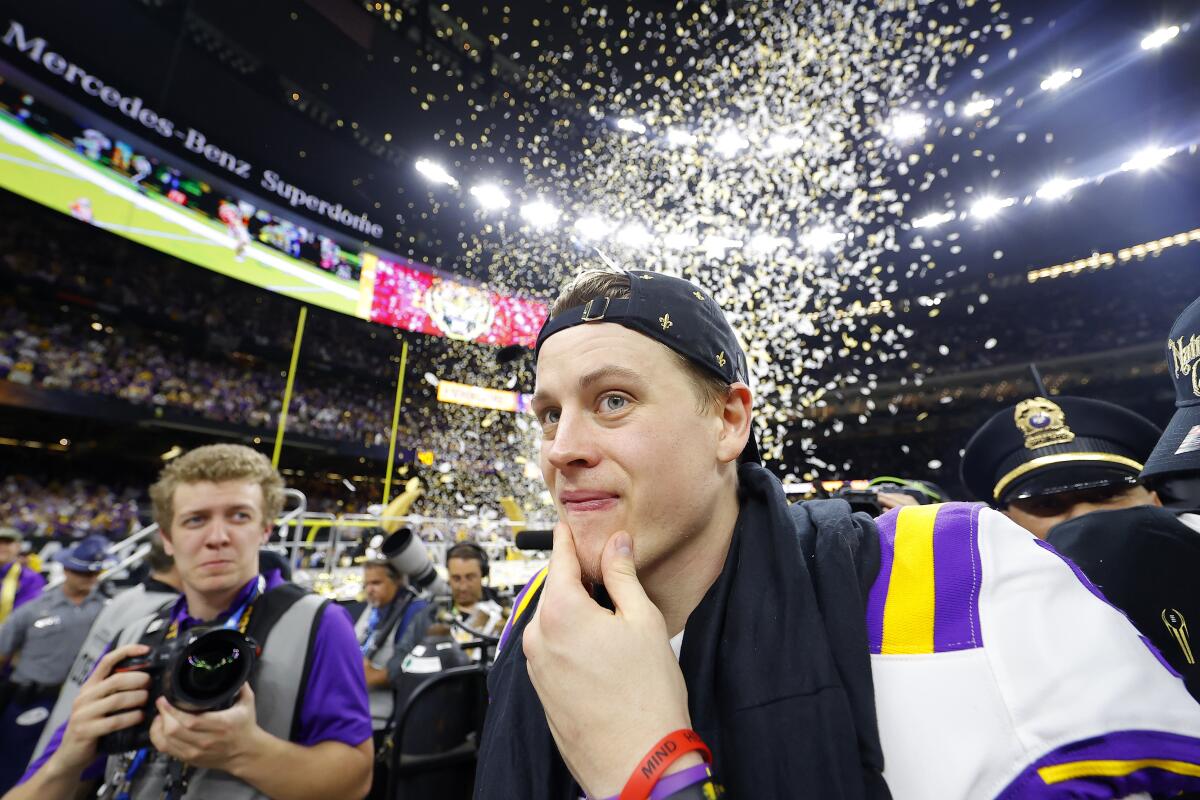
Bowlsby said that in-person course offerings need not be a requirement for athletic events to be held on campus.
“That may be part of the new normal,” Bowlsby said.
Scott put it this way: “We believe that our campuses will need to be open to students in some form in order for our student-athletes to be competing in sports on campus.”
Earlier this week, Stanford coach David Shaw was asked about Emmert saying regular students have to be on campus for athletes to return.
“I think that’s a great sentiment, but I don’t know if that’s going to rule the day when it’s all said and done,” Shaw said.
“I think the president of the United States is going to have a way. I think every state governor is going to have a way. I think every president, provost and chancellor is going to have a way. There may be a scenario where campuses are partially open. If we can bring back athletes and a section of the student body, that may not be exactly what Mr. Emmert was talking about, but that may be good for a certain university.”
College sports’ power brokers share a will, and these comments, taken together, provide a preview of the way — all the while knowing that COVID-19 could blow up everyone’s plans.
::
Sankey puts a lot of effort into staying away from hypotheticals. He says it’s his responsibility to focus on the goal of starting the season as scheduled and making sure the SEC is prepared for that, not wasting valuable time worrying about the what-ifs.
Consider him in the minority in that regard. Most observers expect that disruption at the virus’ hands is the only guarantee for the 2020 season.
“It strikes me that it’s very unlikely that we’ll reach a place sometime this summer where everyone feels equally confident and equally comfortable,” Emmert said. “Because this is so differentiated by geography and urban density and a whole array of demographic variables that the level of confidence is going to vary from campus to campus. Those have got to be local decisions based upon the best available data.
“What does it mean if we have that sort of scenario where we’ve got different opening times or different opening models? What does it mean if a conference has some schools open and some not? You can’t run a regular schedule.”
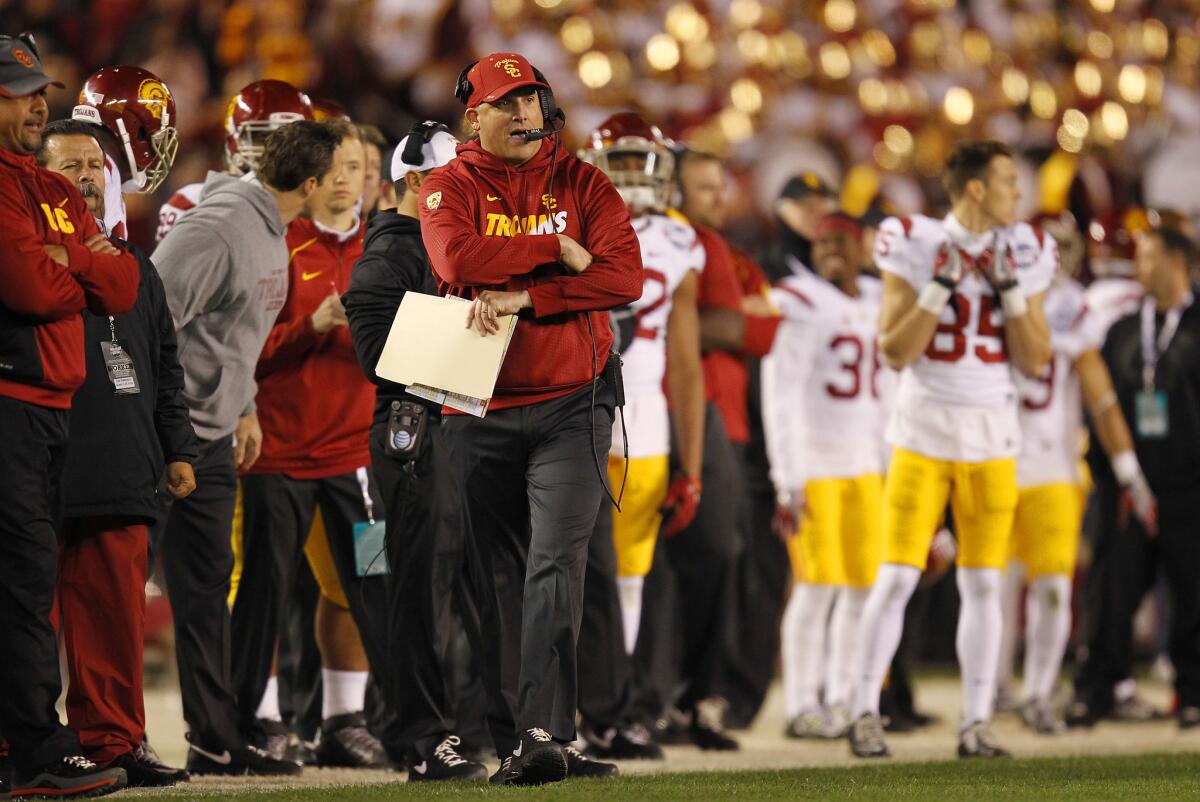
One scenario that has been proposed by commissioners, according to USC coach Clay Helton, is the elimination of nonconference games and teams playing only within their conference this season. That would limit travel concerns related to the virus while still crowning a conference champion and creating useful data points for the College Football Playoff committee to set a bracket.
Even then, teams within a conference could have totally different experiences. For example, Arizona and Arizona State are planning to return students to campus in the fall; USC and UCLA could be dealing with a county stay at home order until August. Some teams could end up playing fewer games than others.
Emmert said he would encourage schools to choose safety over competitive equity, predicting this will be a “very unusual school year.”
“We could debate all day long how much inequity there is in college football,” Utah coach Kyle Whittingham said.
Said Shaw: “If we’re in a conference-only schedule, how do you compare conference to conference? There have been a lot of discussions this year about if we expand the playoff because we’re not going to know how to whittle this down to four. If we’re able to play 12 games, great, it’ll work its way out. But there’s so many unknowns. Many of us believe it’s not going to be 12, and it may not start on time. Those other factors are going to affect however the bowl season looks, as well as the playoff.”
Tom Capehart, a four-sport USC athlete, is graduating Thursday. He’s 85.
As doubts persist regarding USC being ready to play Alabama, Helton expressed optimism that thus far “discussions have been on a national scope.”
But that doesn’t mean that Sankey’s “inflection point” for making a decision that is best for the SEC but hurts another league won’t come eventually.
“For college activity in the fall, there is an asset of time at this point,” Sankey said. “Every day, that slips away a bit.”
Times staff writer Ryan Kartje contributed to this report.
More to Read
Go beyond the scoreboard
Get the latest on L.A.'s teams in the daily Sports Report newsletter.
You may occasionally receive promotional content from the Los Angeles Times.

